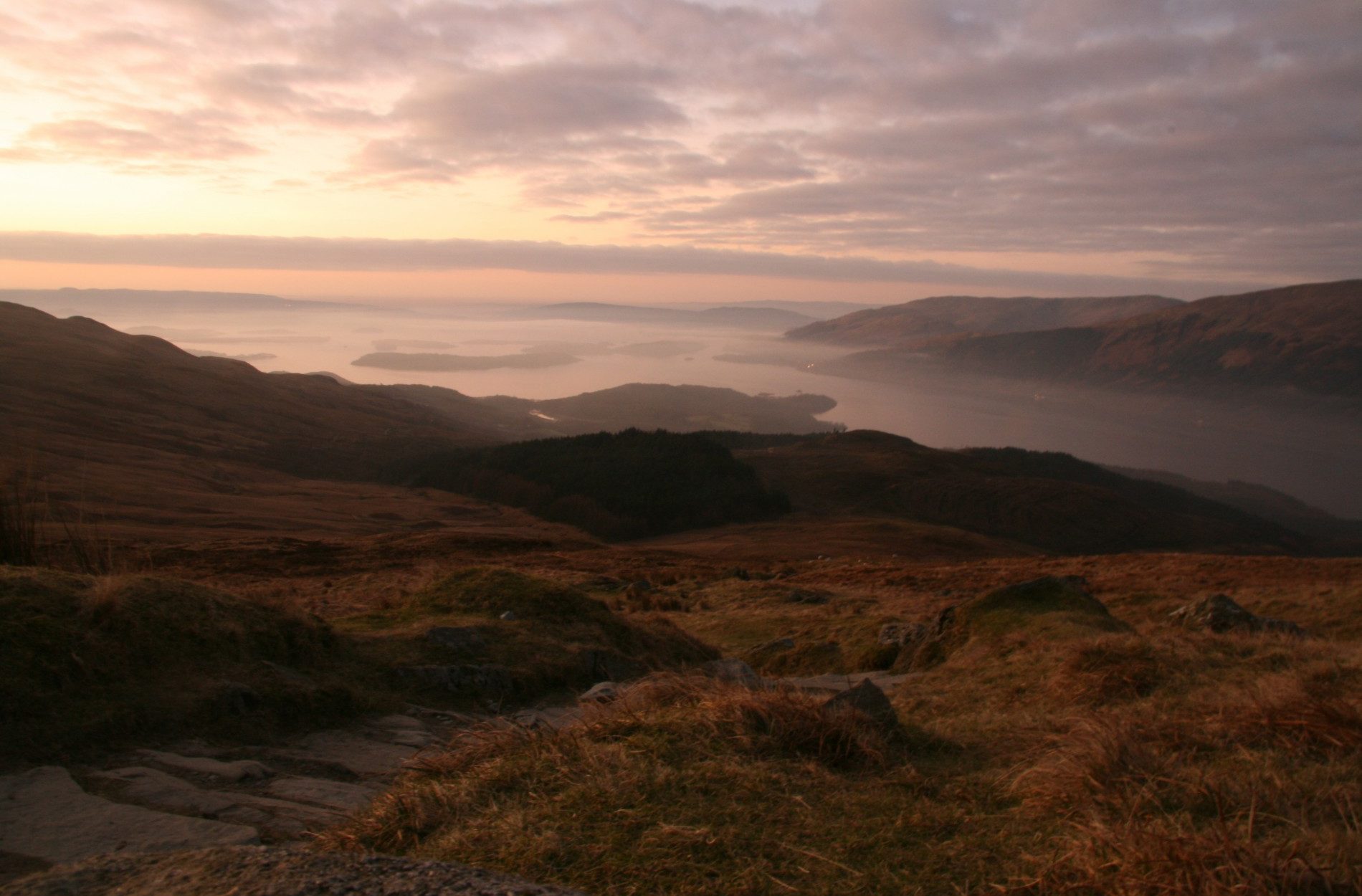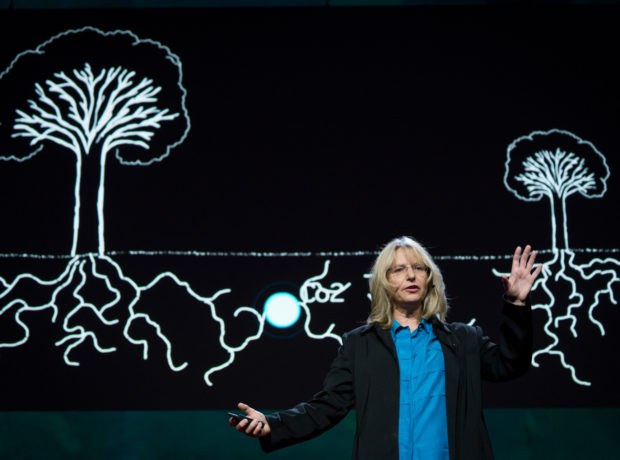‘Rewilding’ has become a conservationist buzzword in recent years. But what are the implications for people, the land and the wider environment of reintroducing long-disappeared species? In a three part investigation, Adam Weymouth went to find out, asking what people thought about proposals for bringing the wolf back to parts of Scotland.
“Until the lion learns to speak, the tales of hunting will always favour the hunter” – K’Naan
In May of last year Adam Weymouth walked 200 miles across Scotland, from the Alladale Estate, Sutherland, to the village of Killiecrankie, south of the Cairngorms, to ask Scots how they might feel if wolves were reintroduced into their country. An EU directive of 1992 obliges governments to investigate the possibilities for returning extinct species to their original habitat, and plans for wolves to be released in parts of Scotland are now being taken seriously. Yet despite much debate in environmental and academic circles, there is little research about how those on the ground, who would live and work amongst them, might feel about having the animal back. This is Adam’s account of his journey, and the complex and competing issues of land, ownership, conservation and environment that he uncovered along the way.
Part 1: The Return of the Wolf
Alladale Estate is 28,000 acres of land, and it comprises two valleys, Glen Alladale and Glen Mór. From its highest peak, Meall nam Fuaran, they say that on a good day you can see the sea both ways. After Ardgay, fifteen miles to the east, the road turns into a single-track lane, and a few miles later it becomes unsurfaced, bordered by the River Carron on one side and Amat Forest on the other, one of the final remaining stands of old growth that remain now in the Highlands. A few fishermen line the bank, heron-like, dressed top to toe in tweed and tartan. From the entrance to the estate it is two miles to the lodge. The river tumbles. The taxi lurches through the potholes. A tawny owl drops from a branch ahead and glides away into the trees.
Construction on Alladale Lodge was completed in 1877, after the original was lost to fire. The owner was an Indian Maharaja. After fifteen miles of track the place comes as a surprise. A pale stone building with a slate roof, a diminishing series of gables, it achieves that curious limbo between antiquity and the modern that speak to the twin Victorian obsessions for Sir Walter Scott and progress. A swoop of gravel drive curves up the hill to where it sits, solid and anachronous above a copse of birch and rowan. The day is bright. A few deer raise their heads and amble off at our approach. A gardener on a sit-on mower moves up and down the lawn. I get out of the car and walk to the front door and knock. I am wishing that I was better dressed, instead of having spent all night on a bus. Either side of the entrance are a pair of wolves, their heads thrown back, all black, mid-howl. I bend down to touch one. It wobbles, made of plastic.
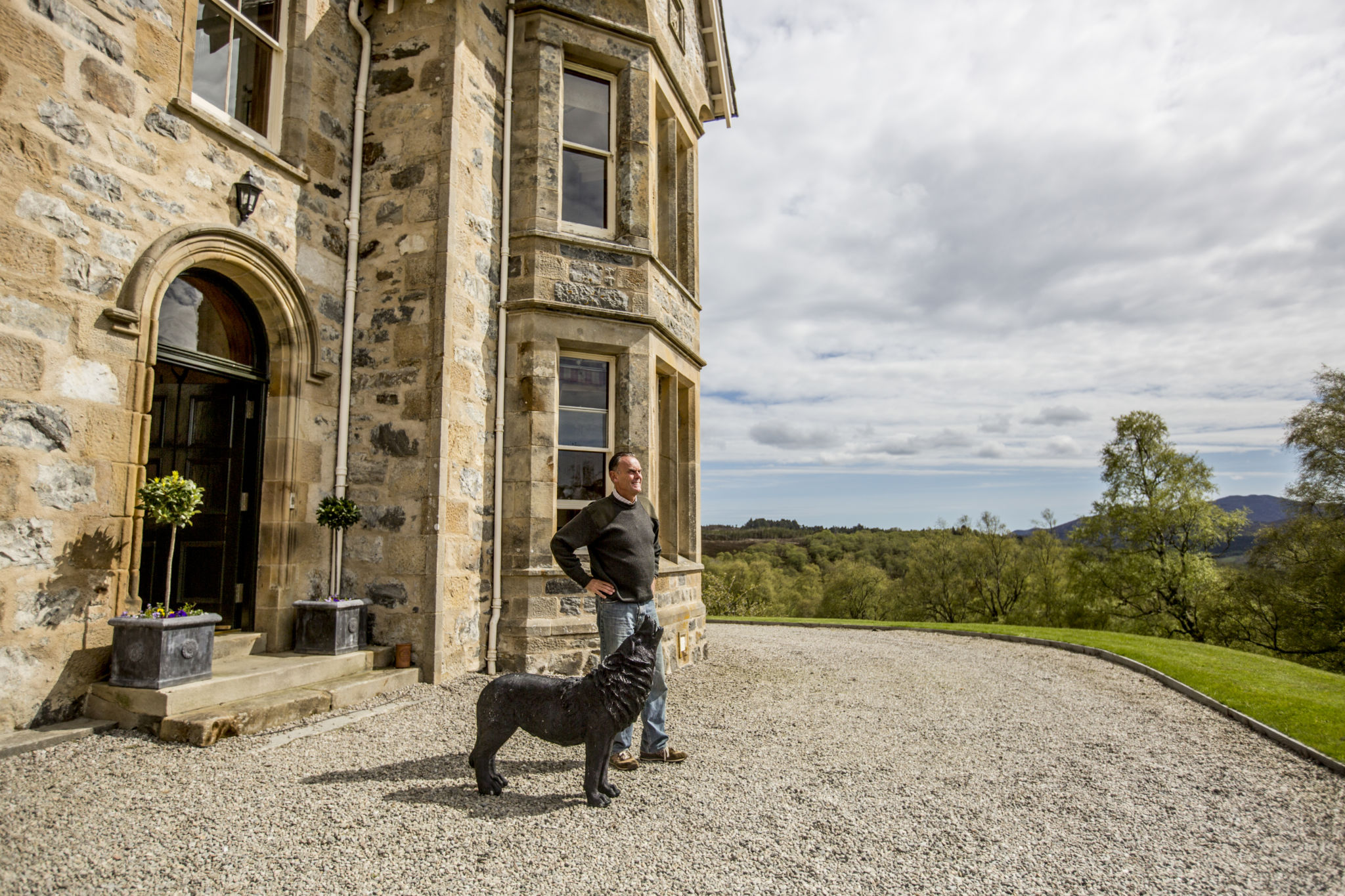
Photo by James Morgan
Alladale was bought by Paul Lister in 2003. Now in his fifties, he has a curious, wound-up energy, and although I try to resist the comparison, there is something more than a little wolfish about him. In jeans and patched jumper he seizes hold of my hand like it is rightfully his and ushers me through to the lounge. About the walls there are black and white etchings of hounds and hunting scenes. The light fittings are modelled from antlers, the cabinets and sideboards of delicate marquetry. Bronze statues of stags, plush rugs of red wine, the windows wide open to the spring. His mother sits on a leather sofa, leafing a magazine.
“I don’t own this place,” he says to me, gesturing about. “I’m just the custodian. How do you own a mountain?”
Maybe you can’t, but buying an estate in Scotland is one way to get pretty close. It reportedly cost £3.2 million. Paul is heir to the MFI fortune, co-founded by his father, Noel, in 1964 and sold off in 1985. Noel wasn’t only instrumental in funding the purchase of Alladale, Paul tells me, but he inspired it as well.
“About 13, 14 years ago my Dad got very ill and spent 10 weeks in intensive care. I had an epiphany after that. I wanted to set up a foundation. I stopped working and bought a highland estate that I could start to restore.”
That restoration has come in many forms. Later, out walking, I pass by bags of saplings by the roadside, rowan and birch and Caledonian pine, ready for planting out. 40,000 were delivered today, bringing the 800,000 that have already been planted closer to the million that he is aiming for. They are also rewetting peat-lands with the aim of turning them back into the functioning carbon sinks that they once were.
“But all that’s kind of standard,” he says. “I think we should be doing something a little bit more interesting.”
They have brought red squirrels back to the area. They trialled wild boar for a while, but the land ended up looking like a maniac had attacked it with a Rotavator. Then they tried moose, but they too struggled to fit into a largely deforested landscape and devoured the few trees that were left. But Paul has never been that keen on the herbivores. “They’ve come and gone. That’s alright. But it’s carnivores that are needed to manage deer numbers. Trees aren’t out of control in Scotland. Deer are. We’ll show people animals up here when the wolves and bears come back.”
When in 2007 Paul first announced that he intended to bring wolves back to Alladale he generated the sort of media furore that most campaigns can only dream of. It has scarcely abated since. There was a six part BBC documentary. There were hysterical headlines. They called him the wolf man, and howling mad. But come 2015 and wolves, thanks to a combination of logistics and red-tape, are manifestly not back at Alladale. And Paul, I get the impression, is not a man who likes to wait.
“I honestly don’t believe in reintroductions,” he says, by which he means the release of an extirpated, or locally extinct, species back into the wild. “It’s going to take too long. And there’s going to be too much bickering, and debating and debating and more debating. I think that what I’m proposing is pretty self-evident. And I think it doesn’t need much debating. It’s going to create a huge attraction.”
What he’s suggesting is to fence in the entire piece of land and release two wolf packs within it. If successful the lynx, and perhaps the bear, would follow. People would pay to travel in four by fours, safari style, through the glens, hoping for the chance to spot a wolf pack pulling down a stag on some snowy summit, lying at night between expensive linen, thrilling to their howls.
It is easy to get swept up by his vision. There is something so effusive in his manner that I expect to look outside and see wolves already at the window. But there are stumbling blocks in the way that for now seem insurmountable. Leaving aside whether miles and miles of fence could ever deliver the sort of wilderness experience Lister hopes to provide, there are other concerns less prosaic, more bureaucratic. For one, animals within an enclosed area, be that a couple of metres square or 28,000 acres, designates the land as a zoo, and under the terms of the Zoo Licensing Act (1981), to avoid gladiatorial spectacle, predator and prey are not allowed to cohabit an enclosure. Perhaps it would be a little unfair on the deer, but I can understand Paul’s frustration.
“A zoo is Regent’s Park,” he snaps. “We’re not a zoo.” He is talking about a big piece of land, and such set-ups exist in other countries. He points to South Africa as one example, and insists that the law needs to come up with a new term to accommodate Alladale, something along the lines of a reserve.
But it is not just the deer that would baulk at the fences. A few weeks after my walk, I call up Helen Todd, campaigns and policy manager of Ramblers Scotland. She is keen to stress that as a group they are open both to the idea of reintroducing species and supportive of much of what Paul has done on his estate: the tree planting, the red squirrel reintroductions, the peat-land restoration. When it comes to the wolves, though, she describes the plan as a “glorified safari park.”
“He has to put them in a fence. And then he wants to keep everybody out of the fence unless they pay money to go and see them. That’s not really what we have in mind when we think of reintroduction.” It is, she says, “a rich man’s dream.”
“There’s a lot of history in the Highlands of people thinking they’ve got private kingdoms that they can do with as they like,” she continues. “That was what the Land Reform Act was supposed to bring to an end.” The 2003 Act enshrined the Right to Roam, opening up almost all of the country for the public to hike and camp in. In a country with one of the highest concentrations of land ownership in the world, it was an important leveller.
Wolves on his reserve would bring in twenty thousand visitors, spread evenly throughout the year, with all the local jobs and revenue that would entail.
Only two or three hundred hikers a year criss-cross Alladale, according to the Estate, and I don’t see any for the four days I am there. There are no Munros nearby, and that rules out most walkers. By Lister’s calculations, wolves on his reserve would bring in twenty thousand visitors, spread evenly throughout the year, with all the local jobs and revenue that would entail. A study on the Isle of Mull supports this: the colonisation of the sea eagle has reportedly brought £5 million a year to the island, and supports 110 jobs (Monbiot, 2013: 102). Yet Helen’s concern is not only about losing Alladale’s 28,000 acres for the occasional rambler, but of what it might set in motion.
“It would be really dangerous,” she says. “Just the idea that you can fence off your entire estate, get a few wolves in there, and Bob’s your uncle, you’ve cracked it. You’ve stopped people from walking on huge tracts of land. Private interests, yet again, trump over public right.”
Could wolves become the guard dogs of the very rich? When I ask Paul whether he appreciates the concern of setting a precedent by fencing off his property he says: “That’s not my problem. My problem is I want to put some wildness back into a small area of the Scottish Highlands and I want to get on with it. And I think nature and wildlife take precedence. We’ve done enough to the landscape over the last millennia to want to be able to put something back.”
Yet Helen disagrees. “People are part of the landscape too,” she says. “People did used to live there. I’m not sure what model we’d use to bring people back, but certainly you can’t have sustainable development if you don’t take account of people as well.”
I head out with Paul in a Land Rover to see some of the estate. He grabs hold of the wheel and we bounce down the rutted tracks. It was stormy this morning, but the sun is pulling out now and the naked hills are clear and distant, the grasses leonine with a thick covering of heather.
We stop on the bridge across the Alladale to see if the salmon are jumping and then take a series of switchbacks up through the old growth oak and birch, stunted from exposure, their branches indistinct with lichens. He cuts the engine where the track makes the summit and we get out of the vehicle and walk to the edge of a granite outcrop. From here we can look down Glen Mór, out over roughly half of what Paul owns. The newly planted saplings are bright green swathes on the valley sides, their young leaves verdant in the late afternoon light, deer fences at their borders.
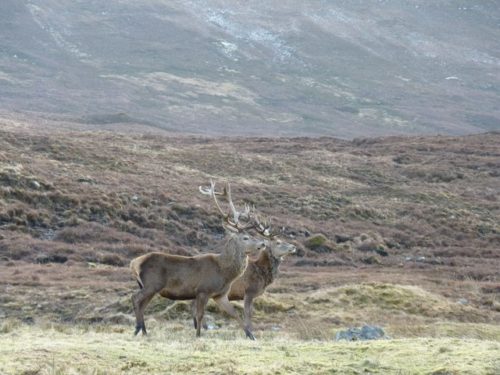
Photo by Lizzie Croose
When he bought the land there were 20 red deer per square kilometre, about average for up here, double that of the human density in the Highlands. With no species but ourselves to keep down the numbers their population had doubled since 1965 (Monbiot, 2013: 100). Now there are six per square kilometre, and they’re aiming for four. Tourists have shot a few of them, up on expensive deer stalking weekends, but mostly they have been managed by the gamekeepers. Until such time that wolves show up in Alladale, they will never be short of work.
Paul tells me how he had been coming up here since his twenties, how he gradually came to realise that these denuded hills were once thick with forest, and how he began to ask questions as to why that was so. As well as Scotland he works extensively in Romania, campaigning to stop the logging there in what remains Europe’s largest piece of old growth forest.
Paul says that only 3% of philanthropy in the UK is spent on the environment. “That’s one of the things I can do,” he says. “Get people at a certain point in their life and say: what are you doing? You’re making more and more and more money. Are you ethically invested? If more clever people get involved with philanthropy in a really focussed, detailed way then things would begin to change. But a lot of people are just motivated by making more and more money. That’s what gives them their buzz.”
So what is it that gives Paul his buzz? We stand there together, looking down his valley. I am intrigued as to what drives him, because I have rarely met anyone more driven.
“It would be nice to do some small things,” he says “to try and do something good before we depart. And I think we should do this sooner rather than later, or it might never happen. I’m an Armageddonist. In regarding humanity on the planet I think we’re just playing with decades.”
“Until we disappear?”
“Yeah. Before we disintegrate. Other species will live way beyond us.”
“Do you think we can avoid that?”
He shakes his head. “Not unless you want to stop breeding. Or unless we want to reduce our consumption by 70%. It’s easy to do it, but no one wants to do it.”
With his 28,000 acres, there are many people who would say he is finding it as hard as the rest of us to cut down. And that, according to Robert Gibson, local MSP is exactly the problem: the concentration of vast amounts of land in the hands of the very few.
It is people … that in the Highlands and Islands are “the most endangered species of all.”
“This is a clearances landscape to many of us,” Gibson tells me over the phone. “There used to be many more people living in the straths and glens than there are now.” It is people, he says, in the Highlands and Islands that are “the most endangered species of all.” The young are leaving for education and work, and it is this, rather than fencing off huge tracts of land and worrying about the wolves, that ought to take priority. “We’re talking about the repopulation of the land,” he says. “With the use of broadband. With the benefits of our knowledge economy. With the way in which young people can communicate and set up businesses which deal all round the world. By building up much smaller units of land on which people can work.” The land in Scotland needs reform, he believes, not rewilding, reform that is for the common good and public interest. “I think that Mr Lister,” he says, “doesn’t meet either of these criteria.”
In the strath north of Alladale there stands the church of Croick. It is a squat building, whitewashed, with a bell tower, a small interior with an even smaller congregation. Outside, the chestnuts tremble in the gusts of early May; the graveyard is ringed by a wall of stone, holding back the moorland, holding back the sheep. It is warm in the sun, out of the wind. Yet there are shadows here. Scratched into the glass of the east window of the church are messages, spidery, hard to decipher, but clear enough in meaning. “May 24 1845.” “Glencal people was in the churchyard here May 24 1845.” “John Ross Shepherd Croick.” “Glencalvie people the wicked generation Glencalvie.” “Glencalvie tenants residing here.”
There has always been sheep in the Highlands of Scotland. At one time they were a sorry, windswept breed. Kept for their wool and their milk and some scant, stringy mutton, they grazed the bogs around the townships, straight-horned, wispy haired, not much bigger than dogs. Each had a name, each was brought inside at night. Christ, after all, was a shepherd, and sheep, in a sense, were blessed. But there had never been sheep in the Highlands like the sheep that came at the end of the eighteenth century. Scotland had changed after Culloden.
For centuries a feudal system of clans had been maintained through a creed of allegiance, a creed that ensured land for clansmen who could barely scrape a subsistence, let alone pay a regular tithe, in exchange for a ready supply of warriors for the chieftain. Yet as a victorious English parliament demoted the clan chieftain from king of his own people to little more than landlord, his people became of no worth to him beyond the rent that they could muster. The land might have held great value to those that lived and farmed and died upon it, but that value was far from economic. Some chieftains stubbornly persisted in their belief in the worth of the old ways, but the new world had its seductions and their sons were lured towards Edinburgh ballrooms and the English language and refined wives from south of the border. Before long these absentee landlords realised that land was worth more without their tenants. Leases came up for renewal and were not renewed. Rents increased 300%. The word being used was ‘Improvement’. The sheep that replaced them were spoken of, darkly, as the new four-footed clansmen.
Roy’s military survey of 1750 shows no settlement at Alladale, but by the early 1780s Mr Thomas Geddes of Tummel Bridge was busy at improving the land, the first Lowland sheep-farmer to colonise north of the Great Glen. In 1810 The Farmer’s Magazine described him as a “very sensible, sagacious man, who understood the business thoroughly” (Mackenzie, 1810: 236). He began with the black-faced Linton, which was already doing well in Perthshire, but it was the arrival of the Cheviot, the True Mountain breed, that demonstrated the potential of the Highlands if the land was cleared of its people. The Cheviot produced twice as much meat as cattle, had wool which fetched three times the price of coarser breeds, and was seemingly oblivious to the bitter Scottish winter. In his improvements, continued the profile, Geddes ensured “that the country had no natural impediment to prevent sheep from thriving as well in it as they did on any of the hills of Scotland” (1810: 236). Natural impediments were men like Malcolm Ross, tenant at Alladale.
Across the country the men of Ross had watched as families were driven from lands they had inhabited back as far as any of them could remember. They had gone to the coasts, where they tried to scrape a living fishing herring in seas they did not know, or they had emigrated across the Atlantic. “Once expelled from the glen they had occupied for generations,” writes John Prebble in his book on the clearances, “it was of small consequence to them whether they travelled ten miles or four thousand. The loss was the same, the pain as great.” (1963 :21) By 1792 they had had enough. At a wedding in July, passionate with whisky, the Rosses of Strath Rusdale schemed a plan to rid the Highlands of the four-footed clansmen forever. It would be known as Bliadhna nan Caorach, the Year of the Sheep. Four hundred men answered their call. As they travelled they gathered up each flock that they encountered into the largest drive that the Highlands had ever known. Their intention was to push them south, beyond Inverness, and from there the men of Inverness could deal with them as they wished. Drive them on, eat them, whatever. By the time they reached the parish of Boath, seven miles north of the Cromarty Firth, they drove 6,000 sheep before them. News of the disturbance had spread south, and three companies of the Black Watch Guard had been summoned. The Highlanders were fired up and in high spirits, but there was little stomach for a revolution. Word that the men of the Crown were on their way had spread, and when the horses and the redcoats arrived at Boath they found no more than the embers of fires and a flock of six thousand grazing sheep. In the days that followed they rounded up the five that they chose to call the ringleaders. Malcolm Ross was fined £50, an impossible sum, to be imprisoned until paid. Others were sentenced to transportation or banishment. All were broken from jail before their sentences were executed and never heard of again.
It was the first and only time that an attempt would be made to drive the Cheviot from the Highlands. In the years that followed more and more land was concentrated into fewer and fewer hands. Families were evicted, townships burnt to the ground. Harsh winters came and many, many starved. By 1841, when the laird of Strathcarron, William Robertson, who lived almost exclusively in London, ordered his factor to clear the five hundred or so people who lived in Glencalvie and the surrounding lands, the process of replacing people with sheep was almost entirely complete. “Four shepherds, their dogs and three thousand sheep occupied land that had once supported five townships,” writes Prebble (1963: 28).
That evening I sit in the front room of a stone cottage called Ghillie’s Rest a little further down the glen, where Paul has put me up for the night. I have been soaking in the bath and I am wearing a branded Alladale Wilderness Lodge dressing gown. The room is glazed three sides and the low light of late spring floods in, light that this far north already stretches out late into the evening. I can see both ways for miles. Slopes of scree and heather converge to the west at the valley’s end, the river broad and silver lit and sinuous throughout. There is the occasional Caledonian pine, occasional enough to remark upon, spreading out umbrella-like and almost African, scattered down the slopes with the scree. There is vast space, there is no one. It is not so hard to imagine wolves here, their howls lighting up the gloaming. It is somewhat harder to imagine people. And I wonder if it is possible to bring back the one without endangering the other.
I leave Alladale on a warm and wind-blown morning with the call of cuckoos on the air. The track traces the bank of the Diebidale as it winds up through Glen Calvie, and I walk against its current as it tumbles down its channel before branching from the river where the path begins to climb in earnest.
Grouse give themselves away, diving forth from the heather with a cackle, and once I see a ptarmigan, motionless, camouflaged almost to perfection. There are scraps of snow on the high places still. I eat a lunch of venison leftovers in an abandoned cottage high up on Carn Chuinneag, no more now than a square of stone walls and a view back down Glen Calvie. The wind buffeting. The path vanishes soon after, and I walk a water course down into next glen, filling my bottle from the streams, sweet and cool and peaty, watching the weather coming in.
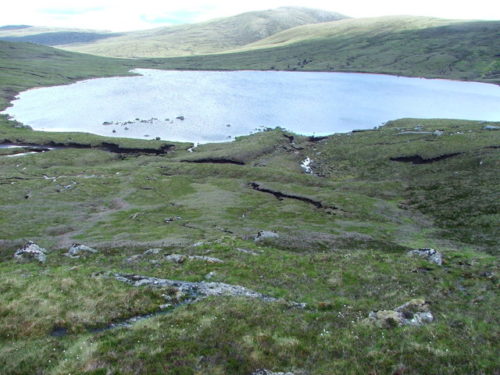
Carn Loch nan Amhaichean. Photo by David Maclennan
By the time I come to the high and open moor the sky has greyed and the rain is blowing, fine but horizontal and continuous. The crags of Carn Loch nan Amhaichean blur and vanish. I try to hold a path south through the peat bog, and for hours jump from one hag to the next, descending into crevasses where the ground rises above my head, the runnels of water black and viscous, reflective as oil slicks. Stagnant pools green with weed. Glints of colour, purple saxifrage, sphagnum moss, the reddening leaves of the bilberry, the landscape drab and drenched. Pulling myself up by handfuls of heather as my boots slip and mire, whilst occasionally, emerging from the peat, preserved, a piece of fossilised Caledonian pine. Some of these pieces have been carbon dated at roughly 4,000 years old. This whole area, according to the map, is known as Diebidale Forest. To the south was Kildermorie Forest. To the west Inchbae Forest, to the north, Freevater Forest. On and on the names stretch, covering the hills. Except for some areas of plantation, distant, hung with mist, there is scarcely a tree to be seen.
There is much debate over the extent to which Scotland’s forests once stretched, but the likelihood is that 6000 years ago about 60% of the Scottish landmass was covered with some form of woodland, a mix of Scots pine and birch dominating in the Highlands. But the Great Wood of Caledon, the vast forest that is said to have been decimated by the Romans and the Vikings, and that holds huge sway on the national consciousness, is entirely a mythological construction, derived from a few throwaway remarks by Roman and Medieval historians and given legs in Victorian times with the same nostalgic fervour that sought to romanticise every aspect of the Highlands. In reality, by 1500 only 10-15% of Scotland was forested, a massive decline that had been precipitated by both climatic factors – a wetter cooler environment that changed the soil and drowned the roots of the pines – and the settlement of the land in the Neolithic and Bronze Age, settlement that brought with it livestock and the implications of overgrazing. By 1750 that figure stood at 4% as the same effects continued, the Little Ice Age, the beginning of the clearances and the extinction of the wolf, allowing deer numbers to boom and sheep to graze unchecked. Today forest cover is 20%, but only 2% is natural woodland, the rest being Sitka and Lodgepole plantation (Smout, 2000).
How Wolves Change Rivers was one of the more unlikely videos to go viral last year. Narrated by journalist George Monbiot, it documents the changes in Yellowstone National Park that have come about since the reintroduction of the wolf in 1995. It has been watched by more than twenty million people.
As in Scotland, the eradication of the wolf in the western United States allowed the ungulate population to boom. In Scotland red deer, in Yellowstone elk. And as in Scotland, the unchecked explosion of a browsing herbivore has prevented new growth of saplings and what trees that remain from fully developing. Each tree I saw as I walked south from Alladale was memorable for its scarcity, each one in some inaccessible spot where its sapling self had been protected from the nibbling. The consultation period preceding the Yellowstone reintroduction received 160,000 comments, making it the biggest official citizen response to a federal action in US history. Ed Bangs, in charge of the consultation team, described “most of them, on both sides, [as] misinformed.” (McNamee, 1997: 45)
Bringing back the wolf to Yellowstone, says Monbiot, not only reduced elk numbers, but it kept the elk skittish and on the move, away from the valleys and gorges where they had no clear line of sight. As the trees recolonised the landscapes that the elk were avoiding, the birds moved back in, and the beavers. The dams the beavers built formed the sort of habitat favoured by other sorts of creatures: otter, duck, fish, the reptiles and amphibians. And as the roots of the trees shored up the banks, the rivers became more sinuous, forming in slower flowing pools that in turn attracted wildlife. “The wolves,” says Monbiot, “changed the behaviour of the rivers.” In scientific terms this is known as a trophic cascade, the indirect influence that a species can have on those more than one level below it on the food chain. In conservationist terms, this is a wolf for the twenty-first century, no longer good for nothing, but rather an animal with a divine hand in the ecosystem.
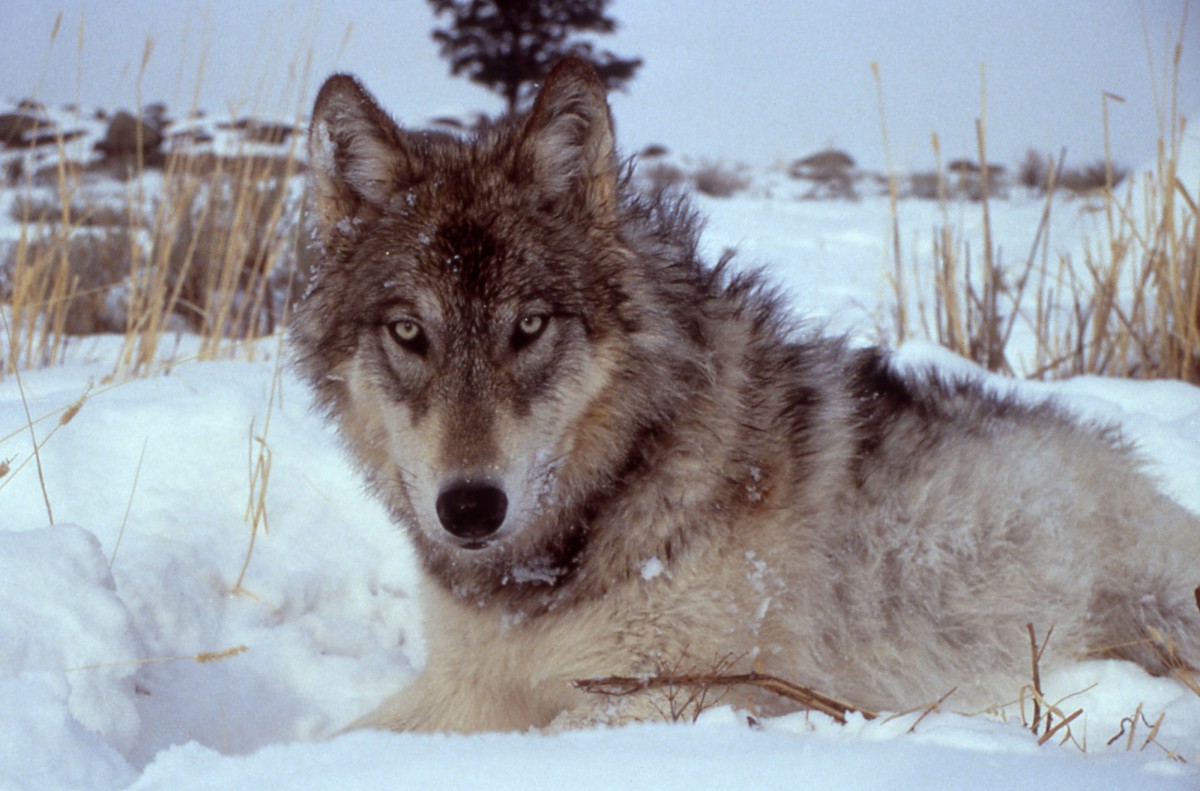
Yellowstone wolf
Except David Mech, a leading wolf biologist who has worked extensively in Yellowstone, advises caution. Wolves have been credited over the past twenty years with everything from increasing pronghorn antelope numbers to cooling down the water. It is the sort of story, as evinced by Monbiot’s twenty million views, that the public and the media adore. It has the perfect narrative arc: the evil wolf redeemed, the revelation of man’s hubris and the proof, if proof were needed, that nature knew best all along. It goes hand in hand with humanity’s growing environmental awareness and slight revulsion of itself. But Mech points out that such simple narrative arcs are hard to find in something as messy as an ecosystem.
It has the perfect narrative arc: the evil wolf redeemed, the revelation of man’s hubris…
Yes, he agrees, there are changes happening in Yellowstone. The aspen and the willow are regenerating, the number of elk is down. But every change that has happened in the past twenty years cannot necessarily be claimed by the wolf. The growing season in Yellowstone has increased by 27 days since wolves were reintroduced, a cause of a changing climate, (Mech, 2012: 146), and during the late nineties 129 beavers were released, which could, it seems fair to suggest, be at least in part responsible for the increase in beaver numbers (2012: 146). Beavers’ dams raise the water level, a higher water level is good for the willows. And thus a different cascade begins to tumble.
This is not to suggest that some of the positive effects that Monbiot proclaims are not occurring. But it is to urge caution as to how we jump to our conclusions. The wolf has been much misrepresented in the past, and to do so again, albeit it in a different light, may not necessarily be progress.
Discussing the debate in Nature, Emma Marris suggests that the truth is probably somewhere in between (2014: 159), and Mech, too, does not discount all the assertions. But he believes something equally important to be at stake. “We as scientists and conservationists who deal with such a controversial species as the wolf have a special obligation to qualify our conclusions and minimize our rhetoric, knowing full well that the popular media and the internet eagerly await a chance to hype our findings. An inaccurate public image of the wolf will only do a disservice to the animal and to those charged with managing it.” (2012: 147)
I have seen no one all day. Not a road, not a sheep, not a power line. Dog prints, deer prints, the occasional shoe print. The next day will be the same. I come finally to a deer track and follow it to the Abhainn Beinn nan Eun River. It is narrow, racing, and I pick my way down through the heather, slipping with tiredness, until at last I come to a grass bank by a waterfall and there I set my tent. As I cook, the blue sky blows back in, the buttery light of a long and drawn out Scottish evening. A few rowan hang over the pool, and on the ridge I skylight a single birch. About the slopes some deer are grazing, and I watch them as I eat. At a sudden change of breeze a doe raises her head, catching my scent, and as one they spook and flee, their white hind legs in the half light, the thrum of their distant hooves.
Next Week: The Last Wolf
Banner photo by Adam Weymouth www.adamweymouth.com @adamweymouth
Bibliography
Bewick, T. (1818) Bewick’s Select fables of Aesop and others. London: Bickers & Son.
Buffon, Georges Louis Leclerc, Comte de, ([1749-1788] 2007) Natural History: General and Particular. Michigan: University of Michigan Library.
Cahill, K. (2002) Who Owns Britain? Edinburgh: Canongate.
Crumley, J. (2010) The Last Wolf. Edinburgh: Birlinn.
Drayton, M. ([1612] 2001) The Complete Works of Michael Drayton, Now First Collected: Volume 2. Polyolbion. Delaware: Adamant Media Corporation.
Harting, J. E. (1880) British Animals Extinct Within Historic Times. Boston: J. R. Osgood and Co.
Ketcham, C. (2014) ‘How to Kill a Wolf’, Vice Magazine [Online]. Available from: http://www.vice.com/en_uk/read/how-to-kill-a-wolf-0000259-v21n3 [Accessed 12 December 2014]
Kington, T. (2014) ‘“Red Riding Hood” Wolf Killer Hunted,’ The Times, 30 July 2014.
Linnel, J.D.C. et al (2002) ‘The Fear of Wolves: A Review of Wolf Attacks on Humans,’ NINA Oppdragsmelding, 731 pp. 1-65.
Lister-Kaye, J. (2015) ‘Return of the Native’, The Guardian, 31 January 2015.
Lopez, B. (1978) Of Wolves and Men, New York: Charles Scribner’s Sons.
McNamee, T. (1997) The Return of the Wolf to Yellowstone. New York: Owl Books.
Mackenzie, G. (1810) ‘A General Survey of the Counties of Ross and Cromarty’, The Farmer’s Magazine,Volume 11, pp. 217-252.
Manning, A.D. et al (2009) ‘Restoring landscapes of fear with wolves in the Scottish Highlands’, Biological Conservation.
Marquiss, M., Madders, M., Irvine, J. & Carss, D.N. (2005) The Impact of White-tailed Eagles on Sheep Farming on Mull [Online]. Available from: http://www.scotland.gov.uk/Resource/Doc/47060/0014566.pdf [Accessed 10 January 2015]
Marris, E. (2014) ‘Legend of the Wolf,’ Nature, 507, pp. 158-160.
Marvin, G. (2012) Wolf. London: Reaktion Books.
Mech, D. L. (2012) ‘Is Science in Danger of Sanctifying the Wolf?’ Biological Conservation,150, pp. 143-149.
Miller, D. (2014) ‘Wildlife expert rejects calls to control sea eagles’, BBC News, 27 January 2014 [Online]. Available from: http://www.bbc.co.uk/news/uk-scotland-edinburgh-east-fife-25921453 [Accessed 12 January 2015].
Monbiot, G. (2013) Feral. London: Allen Lane.
Nicholls, H. (2014) ‘Incredible Journey: One Wolf’s Migration Across Europe’, The Guardian [Online]. Available from: http://www.theguardian.com/science/animal-magic/2014/aug/08/slavc-wolf-migration-europe [Accessed 27 January 2015]
Nuwer, R. (2014) ‘Europe is a Great Place to be a Large Meat-Eater’, Smithsonian [Online]. Available from: http://www.smithsonianmag.com/science-nature/europe-great-place-be-large-meat-eater-180953664/?no-ist [Accessed 27 January 2015]
Pennant, T. (1771) A Tour in Scotland 1769. London: Benj. White.
Powell, D. (1774) The History of Wales. London: T. Evans.
Prebble, J. (1963) The Highland Clearances. Harmondsworth: Penguin Books Ltd.
Rackham, O (1987) The History of the Countryside. London: W&N.
RSPB (2014) ‘Cairngorms Caledonian Forest’, Futurescapes [Online]. Available from: http://www.rspb.org.uk/Images/caledonian-pinewoods_tcm9-260979.pdf [Accessed 27 January 2015]
Simms, I. C., Ormston, C.M., Somerwill, K. E., Cairns C.L., Tobin, F.R., Judge. J. & Tomlinson, A. (2010). A pilot study into sea eagle predation on lambs in the Gairloch area – Final Report. Scottish Natural Heritage Commissioned Report No.370. [Online] Available from: http://www.snh.org.uk/pdfs/publications/commissioned_reports/370finalreport.pdf [Accessed 10 January 2015]
Smout, T. (2000) Nature Contested. Edinburgh: Edinburgh University Press.
Vidal, J. (2014) ‘From the steppe to central Spain, Europe echoes to the howl of the wolf,’ The Guardian [Online]. Available from: http://www.theguardian.com/environment/2014/jan/04/wolf-pack-howls-from-steppe-to-madrid [Accessed 27 January 2015]
Wagner, C., Holzapfel, M., Kluth, G., Reinhardt, I., Ansorge, H. (2012) ‘Wolf (Canis lupus) feeding habits during the first eight years of its occurrence in Germany’, Mammalian Biology, May 2012, Volume 77 Issue 3, pp. 196-203.
The Wolves and Humans Foundation [no date] ‘Conservation of wolves in Europe’, The Wolves and Humans Foundation. [Online] Availble from: http://www.wolvesandhumans.org/wolves/conservation_of_wolves_in_europe.htm [Accessed 12 January 2015]
Worrall, P. (2014) ‘FactCheck Q&A: the facts on dog attacks’, Fact Check [Online]. Available from: http://blogs.channel4.com/factcheck/factcheck-qa-facts-dog-attacks/17727 [Accessed 12 January 2015]
Yakas, B. (2012) ‘Wyoming Wants To Bring Wolves To Central Park’, Gothamist, 16 February 2012 [Online]. Available from: http://gothamist.com/2012/02/16/wyoming_wants_to_bring_wolves_to_ce.php [Accessed 9 December 2014]
